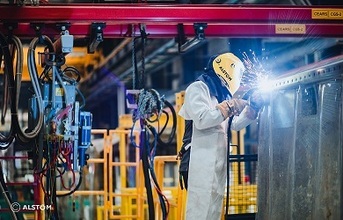
As the Covid-19 pandemic brought the world to a standstill in the past few months, it brought to light each organisations capability to handle the changes that came with it. It tested the ability of an organisation to handle volatile, uncertain, complex and ambiguous (VUCA) scenarios, demanding them to be adaptable and resilient with no time to plan, prepare, pilot and execute.
As a function, supply chain managers are always geared up to be able to ‘anticipate better' and ‘react faster' to be able to preempt and upkeep the inventory. Each organisation has built structure and processes to manage both these capabilities. Often, organisations grow managing these capabilities, not with a split down the middle. With the onset of the pandemic, the supply-demand equation toppled across organisations affecting the overall businesses in many parts of the world.
During this phase, organisations experienced the impact in three notable stages:
Stage 1 - The Shock & Awe Phase
When China issued the lockdown in mid-January, the world became more attentive towards recognising the spread and damages of the virus. By the end of January, Covid-19 epidemic was identified as a public health emergency internationally by the World Health Organisation (WHO). Around this period, some of us began acknowledging the uncertainty of the situation and focused our efforts on foreseeing the risks to develop possible solutions.
Stage 2 - The React Phase
It was clear to us that the Covid-19 situation would cause a mid-term disruption to our supplies, as the spread of the pandemic began to agitate our supplies in Europe. Efforts were put in to immediately set up a war room in the office (which moved on to become a virtual war room by the end of March) and established two ‘control towers' specifically for end-to-end visibility. While the supplier control tower focused on prioritising supplies from international vendors to our four sites in India, the ‘logistics tower' oversaw end-to-end visibility of shipments from our consolidation centres. A collaborative peer network was also formed to bring together all the supply chain heads across the organisation to calculate our risks/vulnerabilities and tackle them as a team. Ultimately, our efforts resulted in fully functioning sites without a single day of shut down on account of non-availability of materials.
Stage 3 - Build Resilience
We started adapting to the idea of a new reality, where several aspects of businesses have been drastically modified after the two months of lockdown in India. We revisited our supply chain structure, processes and controls to form a stronger and more flexible system that could withstand issues that may arise in the future. In the short term, we have embarked upon initiatives such as complete procurement diagnostics, review supplier vulnerability and building of collaborative inventory. We plan to quickly adapt and scale up our sourcing strategy, collaborative planning-forecasting, replenishment with key partners and virtual co-location, information sharing, to be prepared for the days to come.
In the long run, we are gearing up to drive digitalization, predictive supply chain planning and smart logistics to achieve complete end-to-end transparency in supply chain.
With the focus on Atmanirbhar Bharat, our efforts are strongly towards creating an ecosystem within the country. While the pandemic did bring hurdles, we see more opportunity to source from India in the times to come, thereby making the country self-sufficient.
END



































